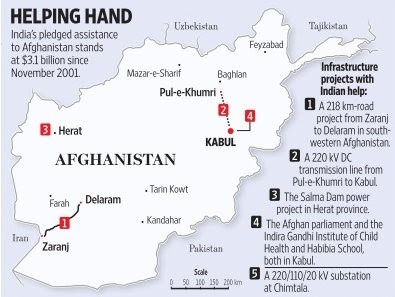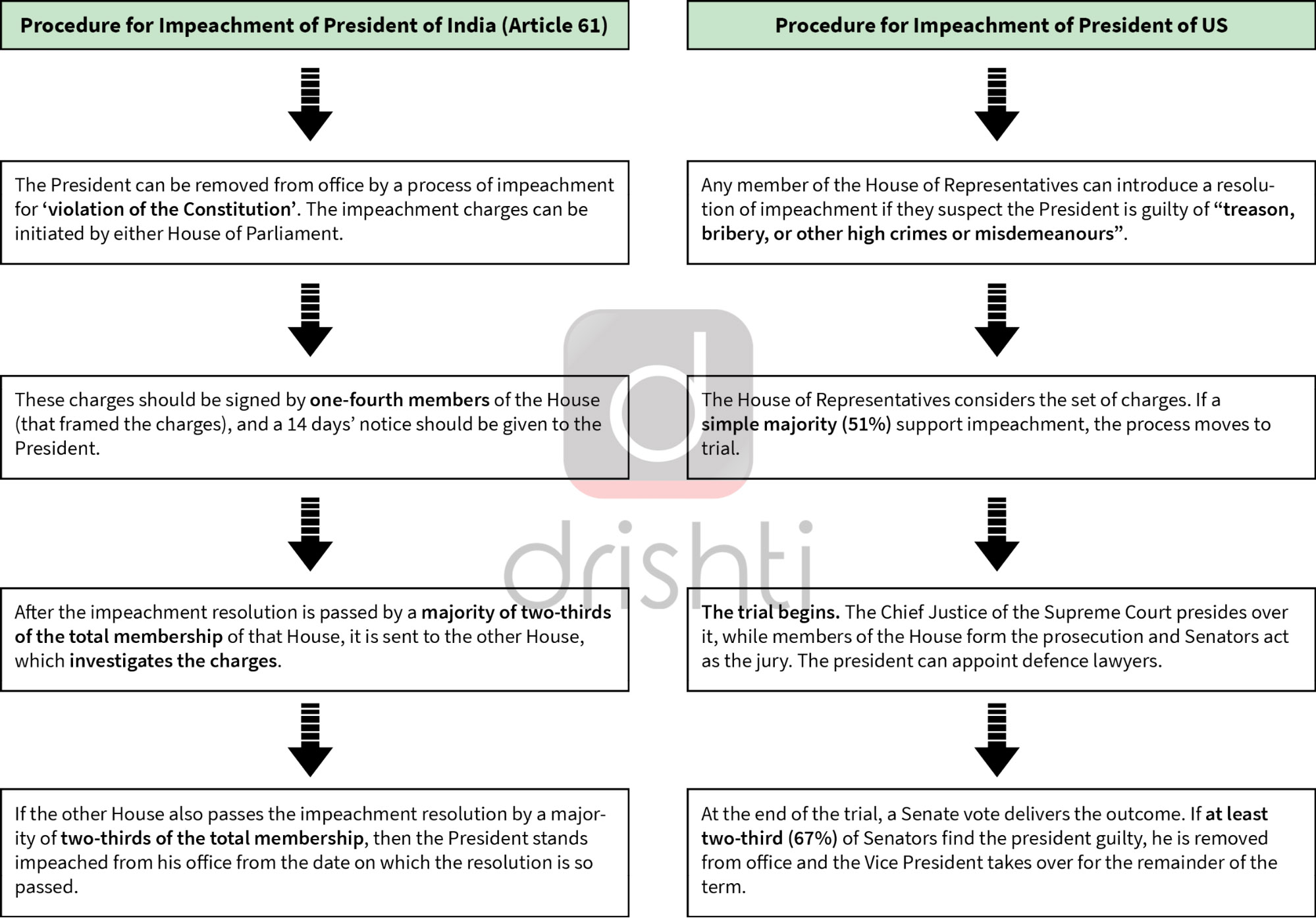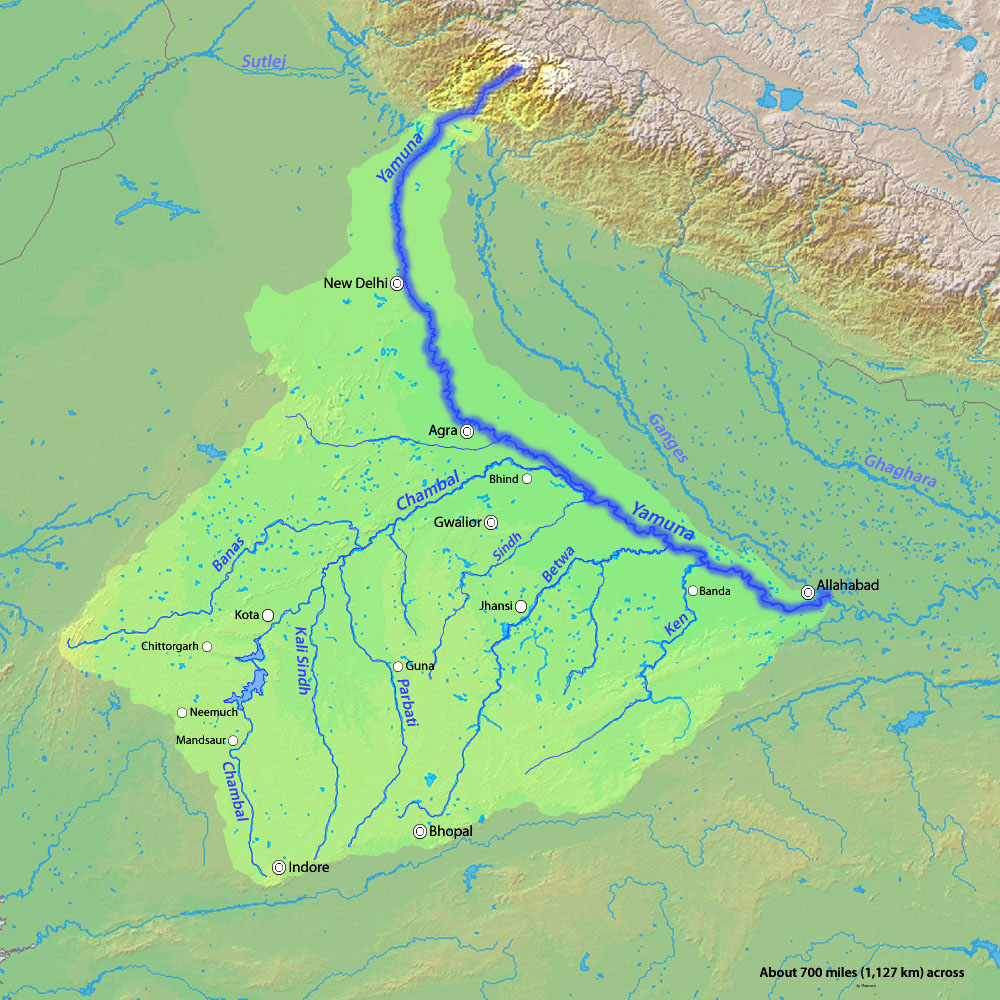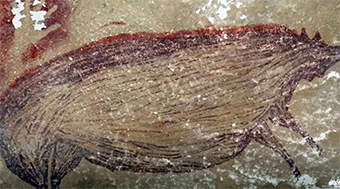International Relations
India as Counterbalance to China: USA
Why in News
Recently, the Trump administration declassified a document which asserted that a strong India, in cooperation with like-minded countries, would act as a counterbalance to China in the strategic Indo-Pacific region.
- The document on the USA strategic framework for the Indo-Pacific from 2018 outlines objectives, challenges and strategies with regard to China, North Korea, India and other countries in the Indo-Pacific region.
Key Points
- Challenges for USA:
- Maintaining USA's strategic primacy in the Indo-pacific and stopping China from establishing illiberal spheres of influence.
- Ensuring that North Korea does not threaten the USA.
- Advancing the USA economic leadership globally while pushing fair and reciprocal trade.
- Aspects Related to India:
- India is a preferred partner on security issues and to cooperate to preserve maritime security and counter Chinese influence in South Asia and Southeast Asia. To achieve this, USA aims to:
- Support India’s aspiration to be a leading global power, highlighting its compatibility with the USA, Japanese and Australian vision of the Indo-Pacific.
- Work with India “toward domestic economic reform”.
- Enhance defence cooperation and interoperability.
- Provide greater leadership roles for India in the East Asia Summit and ASEAN Defence Ministers’ Meeting Plus.
- Support India’s Act East policy.
- India is a preferred partner on security issues and to cooperate to preserve maritime security and counter Chinese influence in South Asia and Southeast Asia. To achieve this, USA aims to:
- India vis-a-vis China:
- Help India addressing disputes with China: USA aims to support India via military, diplomatic and intelligence channels to help address continental challenges such as the border dispute with China and resolution of disputes over rivers, including the Brahmaputra and other rivers facing diversion by China.
- Supporting India's reservations against Belt Road Initiative: USA seeks the transparent infrastructure-debt practices in the countries facing debt due to Chinese financing under Belt Road Initiative.
- Working with India and Japan: To help finance projects that enhance regional connectivity between India and countries of the region.
- India-USA Relations:
- Shared democratic values and increasing convergence of interests on bilateral, regional and global issues.
- Broad-based and multi-sectoral relationship covering trade and investment, defence and security, education, science and technology and cyber security etc.
- People to people connection: Vibrant people-to-people interaction and support across the political spectrum in both countries nurture bilateral relationships between the two countries.
- USA has signed defence agreements with India to provide military information and mutual logistics support. These are:
- The General Security of Military Information Agreement (GSOMIA).
- The Logistics Exchange Memorandum of Agreement (LEMOA).
- The Communication Compatibility and Security Agreement (COMCASA).
- The Basic Exchange and Cooperation Agreement (BECA): It was the result of the Indo-United States (US) 2+2 talks.
- Recent USA-China Rivalries:
- Competition for dominating world finances: To counter the USA-dominated International Monetary Fund, World Bank and World Trade Organization, China has come out with alternative financial institutions like Asia Infrastructure Investment Bank, and New Development Bank.
- Contending influence over international groupings: In order to contain rising China’s assertiveness, the USA under its ‘pivot to Asia policy’ has launched a Quad initiative, Indo pacific narrative. Most recently, the USA proposed to expand G7 to G-11 without including China in it.
- New Cold War: USA-China confrontation is on multiple fronts including ideological and cultural hegemonic rivalry, trade wars which has often been called the New Cold War.
Way Forward
- Maintain interest oriented balancing: India should realise its rising global power and rather than getting enmeshed in USA-China rivalry, it should prioritize its own interests and growth by maintaining peaceful mutual relationships.
- Promote Multilateralism: India can promote new multilateralism under the aegis of Vasudhaiva Kutumbakam- which relies on restructuring both the economic order and societal behaviour for equitable sustainable development.
International Relations
India’s NSA Visit to Afghanistan
Why in News
Recently, the National Security Advisor (NSA) of India visited Afghanistan for talks on strategic issues with the leadership in Kabul.
Key Points
- First official visit since initiation of Intra-afghan talks:
- This visit is significant because it was the first visit by any senior Indian official amidst the Intra-Afghan Talks.
- Intra-Afghan talks refer to the negotiation meetings between the Taliban and the Afghan High Council for National Reconciliation (representative of Afghan Government) opened in Doha in 2020.
- These talks are facilitated and supervised by the United States, representatives of the Ghani government and the Taliban aimed at ending the decades-old war and forging a political settlement.
- Issues discussed:
- Exchanged views on the Peace Process, the beginning of 2nd round of (Intra-Afghan) talks, and the role of India in establishing peace in Afghanistan.
- Emphasis to synchronise efforts to combat terrorism and maintain peace in Aghanistan which shall become more challenging after the USA troops withdraw after Doha Peace Pact (2020).
- Doha Peace Pact: In February 2020, the USA and the Tabilan signed an agreement in Doha, (Qatar’s capital) which included:
- USA to withdraw all of its troops from Afghanistan in 14 months and would also release Taliban prisoners, held captive by the Afghan government.
- Assurance by Taliban that they would not allow transnational jihadist organisations such as al-Qaeda and the Islamic State to use Afganistan as their base and also committed to start direct talks with the Afghan government, which began in September 2020.
- Doha Peace Pact: In February 2020, the USA and the Tabilan signed an agreement in Doha, (Qatar’s capital) which included:
- India's Role in establishing Peace in Afghanistan:
- By participating in the intra-Afghan inaugural dialogue in Doha, India has shown its willingness to engage with all Afghan parties including the Taliban for peace in Kabul.
- India conveyed that the peace process must:
- Be Afghan-led, Afghan-owned and Afghan-controlled;
- Respect national sovereignty and territorial integrity of Afghanistan; and
- Promote human rights and democracy.
- India has a major stake in the stability of Afghanistan since it has invested considerable resources in Afghanistan's development.
- Significance of Stable Afghanistan for India:
- A stable Afghanistan government in power is a strategic asset vis-à-vis Pakistan.
- An increased political and military role for the Taliban and the expansion of its territorial control should be of great concern to India since the Taliban is widely believed to be a protégé of Islamabad.
- The country has the Central Asian Republics to the North, Pakistan to its East, and through Iran and Pakistan the Indian Ocean deeper south.
- Withdrawal of the USA troops could result in the breeding of the fertile ground for various anti-India terrorist outfits like Lashkar-e-Taiba or Jaish-e-Mohammed.
- A stable Afghanistan government in power is a strategic asset vis-à-vis Pakistan.
Way Forward
- India has reaffirmed its support to the Doha Agreement (2020) and intra-Afghan peace negotiations facilitating Afghan peace process and reiterated its commitment to Afghanistan’s pursuit of “sustainable peace and reconciliation”.
- India’s vision of a sovereign, united, stable, plural and democratic Afghanistan is one that is shared by Afghanistan, cutting across ethnic and provincial lines.
- Continuing such active engagement will enable India to work with like-minded forces in the region to ensure that the vacuum created by the USA withdrawal does not lead to an unravelling of the gains registered during the last two decades.
Indian Polity
Impeachment of the President of the USA
Why in News
Donald Trump has become the first President of the USA in history to be impeached twice by the House of Representatives. He was charged for inciting an insurrection.
- On 6th January, 2021, as the USA Congress assembled to certify President-elect Joe Biden's victory, a mob of Donald Trump supporters occupied the USA Capitol in a failed bid to overturn the election results.
Key Points
- Mechanism of Impeachment of President in USA:
- Two Houses: The legislature of the United States of America i.e. Congress of the United States consists of two houses:
- The Senate, in which each state, regardless of its size, is represented by two senators.
- House of Representatives, to which members are elected on the basis of population.
- Reasons for Impeachment: The USA Constitution states that the President can be removed for conviction of treason, bribery, or other high crimes or misdemeanour.
- Earlier Impeachments:
- Three USA Presidents, Trump in 2019, Bill Clinton in 1998 and Andrew Johnson in 1868, previously were impeached by the House but acquitted by the Senate.
- Thus, no USA President ever has been removed from office through impeachment.
- Two Houses: The legislature of the United States of America i.e. Congress of the United States consists of two houses:
- Mechanism of Impeachment of President in India:
- In India, the President can be removed only for ‘violation of the Constitution’ and the Constitution does not define the meaning of the phrase ‘violation of the Constitution’.
- The impeachment charges can be initiated by either House of Parliament - Lok Sabha or Rajya Sabha.
Mechanism of Impeachment of President in India and the USA
Indian Economy
India’s Potential to Increase Cereals Export
Why in News
The US Department of Agriculture (USDA) has noted in its latest Grain: World Markets and Trade report that exports of wheat and rice from India are likely to increase.
Key points
- Findings:
- Increase in Wheat Exports: The US Department of Agriculture (USDA) has recently upped its forecast of Indian wheat exports for 2020-21 (July-June) to 1.8 million tonnes (mt), as against its earlier estimate of 1 mt.
- Increase in Rice Exports: USDA has also estimated India’s rice exports to have hit a record 14.4 mt in 2020, up from the preceding two years.
- Causes for Increase in Wheat Exports:
- Chinese Stockpiling: The key driver of global price turnaround seems to be China. The reasons for its building strategic stockpiles of everything aren’t as fully clear as their effect on international prices.
- Rising Global Prices: For example, the Russian government is levying an export tax on wheat in response to high domestic prices. Bangladesh, a potential importer of wheat from Russia is beginning to shift its purchases towards India.
- Ultra-low interest rate money increasingly being invested into agri-commodity markets.
- In the wake of Covid 19 Pandemic Various Countries such as the USA, India, Russia are reducing their interest rates.
- For example: Bank of England current bank rate: 0.1%
- Reserve Bank of India current RBI repurchase rate: 4%
- Causes for Rise in Rice Exports:
- Impact of drought:
- The country’s closest competitors Thailand and Vietnam have been facing drought leading to decline in rice productivity.
- Increase in demand in Bangladesh
- Impact of drought:
- Potential Challenges to Rise in Export:
- Indian wheat is still not competitive at the government’s minimum support price (MSP) of Rs 19,750 per tonne. Further additional cost of cleaning, bagging, loading and transport to port would be in addition making export uncompetitive.
- Solution: Procurement of wheat below MSP from Uttar Pradesh, Bihar, Gujarat and Maharashtra, where not much government procurement happens.
- Significance:
- Estimates for increase in these exports will be beneficial as India’s own domestic production of rice and wheat has touched an all-time-high of 118.43 mt and 107.59 mt, respectively, in 2019-20.
- Government agencies also procured an all time high in 2019 -20 thus burdening government exchequer.
Cereals Exports of India
- India is one of the largest producers as well as exporter of cereal products in the world.
- The important cereals are - wheat, paddy, sorghum, millet (Bajra), barley and maize.
- Previously in 2008, India had imposed a ban on export of rice and wheat etc. to meet domestic needs.
- Owing to huge demand in the global market and country's surplus production, India allowed limited amounts of export of the commodity.
- Rice (including Basmati and Non Basmati) occupy the major share in India's total cereals export with 95.7% in 2019-20. Whereas, other cereals including wheat represent only 4.3% share in total cereals exported from India during the year 2019-20.
- Major Export Destinations (2019-20) of Wheat : Nepal, Bangladesh , UAE, Somalia.
- Major Export Destinations (2019-20) of Non Basmati rice: Nepal, Benin, UAE, Somalia.
- Major Export Destinations (2019-20) of Basmati Rice: Iran, Saudi Arab, Iraq, UAE.
Biodiversity & Environment
Supreme Court’s View on Pollution in Yamuna
Why in News
Recently, the Supreme Court (SC) has taken suo motu cognizance of pollution of water bodies by untreated sewage.
- The SC was hearing an urgent petition filed by the Delhi Jal Board (DJB), to immediately stop Haryana from discharging pollutants into the Yamuna river.
Key Points
- Background:
- In the 2017 Paryavaran Suraksha Samiti v. Union of India case, the SC directed that norms for generating funds, for setting up and/or operating the Common Effluent Treatment Plant and Sewage Treatment Plants, shall be finalised by the State Pollution Control Board’s on or before 31st march 2017.
- It was directed that for the purpose of setting up these plants, the state government will prioritise such cities, towns and villages, which discharge industrial pollutants and sewer directly in rivers and water bodies.
- SC’s Ruling:
- Constitutional Provisions Highlighted:
- Article 243W of the Constitution vests municipalities and local authorities with the performance of functions and implementation of schemes as may be entrusted to them, including those in relation to the matters listed in item 6 of the 12th schedule.
- Item 6 of the Schedule includes “public health, sanitation conservancy and solid waste management”.
- Article 21: The right to clean the environment, and further, pollution-free water, has been protected under the broad rubric of the right to life.
- Article 243W of the Constitution vests municipalities and local authorities with the performance of functions and implementation of schemes as may be entrusted to them, including those in relation to the matters listed in item 6 of the 12th schedule.
- Directions to Central Pollution Control Board (CPCB):
- The court directed the CPCB to submit a report identifying municipalities along the river Yamuna, which have not installed total treatment plants for sewage as per the requirement or have gaps in ensuring that the sewage is not discharged untreated into the river.
- It asked CPCB to highlight any other source of prominent contamination within the limits of Municipalities and to submit priority-wise list of Municipalities, river stretches adjacent to which have been found to be most polluted.
- Constitutional Provisions Highlighted:
Pollution in Yamuna
- Causes of Pollution in Yamuna:
- Industrial Pollution:
- The Yamuna flows into Delhi from Haryana and the state has industrial units in Sonipat (on the banks of Yamuna). Ammonia is used as an industrial chemical in the production of fertilisers, plastics and dyes.
- Mixing of Drains:
- Mixing of two drains carrying drinking water and sewage or industrial waste, or both, in Sonipat. The two drains often mix due to overflow or damage to the wall that separates them.
- Industrial Pollution:
- Effects of Rising Ammonia:
- Ammonia reduces the amount of oxygen in water as it is transformed to oxidised forms of nitrogen. Hence, it also increases Biochemical Oxygen Demand (BOD).
- Water pollution by organic wastes is measured in terms of BOD.
- If the concentration of ammonia in water is above 1 ppm, it is toxic to fishes.
- In humans, long term ingestion of water having ammonia levels of 1 ppm or above may cause damage to internal organs.
- Ammonia reduces the amount of oxygen in water as it is transformed to oxidised forms of nitrogen. Hence, it also increases Biochemical Oxygen Demand (BOD).
Yamuna
- Source: The river Yamuna, a major tributary of river Ganges, originates from the Yamunotri glacier near Bandarpoonch peaks in the Mussoorie range of the lower Himalayas in Uttarkashi district of Uttarakhand.
- Basin: It meets the Ganges at the Sangam in Prayagraj, Uttar Pradesh after flowing through Uttarakhand, Himachal Pradesh, Haryana and Delhi.
- Length: 1376 km.
- Important Dam: Lakhwar-Vyasi Dam (Uttarakhand), Tajewala Barrage Dam (Haryana) etc.
- Important Tributaries: Chambal, Sindh, Betwa, Ken, Tons, Hindon.
Important Facts For Prelims
Henley Passport Index 2021
Why in News
India has been ranked 85th in the most powerful passport report ‘Henley Passport Index 2021’.
Key Points
- About the Index:
- The Henley Passport Index is the original ranking of all the world’s passports according to the number of destinations their holders can access without a prior visa.
- Originally created by Dr. Christian H. Kaelin (chairman of Henley & Partners), the ranking is based on exclusive data from the International Air Transport Association (IATA), which maintains the world’s largest and most accurate database of travel information.
- It was launched in 2006 and includes 199 different passports.
- Latest Rankings:
- Top Rank Holders:
- Japan continues to hold the number one position on the index, with passport holders able to access 191 destinations around the world visa-free.
- Singapore is in second place (with a score of 190) and South Korea ties with Germany in third place (with a score of 189).
- The top spots were traditionally held by EU countries, the UK, or the US. This year, it is the Asia-Pacific (APAC) passports which are the most powerful in the world as it includes some of the first countries to begin the process of recovering from the Covid-19 pandemic.
- Bottom Rank Holders:
- Syria, Iraq and Afghanistan continue to be the countries with the worst passport to hold with a passport score of 29, 28 and 26 respectively.
- India’s Performance:
- India ranks 85th, with a visa-free score of 58.
- The Indian passport ranked higher in both 2020 (84th) and 2019 (82nd).
- Comparison with Neighbouring Countries:
- Pakistan was ranked 107th and Nepal was ranked 104th.
- Top Rank Holders:
- Related Government Initiatives:
- The government has been making efforts to increase the number of countries that provide visa free travel, visa-on-arrival and e-visa facilities so as to further ease international travel for Indians.
- While issuance of visa and visa related process is the sovereign and unilateral decision of the respective country, the matter regarding easier and liberalised visa policy for Indian nationals is taken up regularly in bilateral meetings and forums with foreign countries.
- The government has been making efforts to increase the number of countries that provide visa free travel, visa-on-arrival and e-visa facilities so as to further ease international travel for Indians.
Important Facts For Prelims
World's Oldest Cave Art
Why in News
Recently, archaeologists have discovered the world’s oldest known cave art which is a life-sized picture of a wild pig that was painted at least 45,500 years ago in Indonesia.
Key Points
- Location:
- The picture was found in the Leang Tedongnge cave in a remote valley on the island of Sulawesi, Indonesia.
- Sulawesi Warty Pig Painting:
- It dates to at least 45,500 years ago.
- It shows a pig with a short crest of upright hairs and a pair of horn-like facial warts in front of the eyes, a characteristic feature of adult male Sulawesi warty pigs.
- Sulawesi warty pigs were the most commonly portrayed animal in the ice age rock art of the island, suggesting they have long been valued both as food and a focus of creative thinking and artistic expression.
- Painted using red ochre pigment, the pig appears to be observing a fight or social interaction between two other warty pigs.
- Previous Oldest Painting :
- The previously oldest dated rock art ‘scene’ at least 43,900 years old, was a depiction of hybrid human-animal beings hunting Sulawesi warty pigs and dwarf bovids.
- It was discovered by the same research team at a nearby limestone cave site.
- Some of the Caves with Paintings in India:
- Ajanta :
- This cave is located in Aurangabad district of Maharashtra.
- Famous fresco paintings of Ajanta are dying princesses, flying apsara and preaching Buddha.
- Ellora :
- It is located in the Aurangabad district of Maharashtra.
- It is famous for the largest monolithic excavation in the world- the great Kailasa.
- Elephanta :
- It is located on Elephanta Islands in Mumbai.
- There are seven cave excavations in the Elephanta group.
- Bhimbetka :
- It is located between Hoshangabad and Bhopal, in the foothills of the Vindhya Mountains.
- It has one of the oldest paintings in India and the world.
- Ajanta :
Important Facts For Prelims
ASMI:The Machine Pistol
Why in News
India’s first indigenous 9mm Machine Pistol has been jointly developed by Infantry School, Mhow and DRDO’s Armament Research & Development Establishment (ARDE), Pune.
- Machine pistols are primarily self-loading versions of pistols which are either fully automatic or can also fire bursts of bullets.
Key Points
- The Pistol is named “Asmi” meaning “Pride”, “Self-Respect" & “Hard Work”.
- Features of Asmi:
- The Machine Pistol fires the in-service 9mm ammunition.
- With an overall empty weight of less than 2 Kg, it features an 8-inch barrel and 33 rounds high capacity magazine.
- It has an upper receiver made from Aircraft grade Aluminium and lower receiver from Carbon Fibre.
- 3D Printing process has been used in designing and prototyping of various parts including trigger components made by metal 3D printing.
- Significance:
- The weapon has huge potential in Armed forces as personal weapon for heavy weapon detachments, commanders, tank, aircraft crews, counter insurgency and counter terrorism operations etc.
- Cost Effective:
- The Machine Pistol is likely to have production cost under Rs. 50000 each and has potential for exports.
Important Facts For Prelims
Indian Army day
Why in News
Army Day is celebrated every year on 15th January in India to commemorate the jawans and the Indian Army.
- This year India is celebrating its 73rd Army Day.
Key Points
- Historical Background:
- On 15th January 1949, Field Marshal Kodandera M. Cariappa, who was then a Lieutenant General, took over as the first Indian Commander-in-Chief of the Indian Army from General Sir Francis Butcher, the last British person to hold that post.
- K. M. Cariappa adopted the slogan 'Jai Hind' which means 'Victory of India'. He is also one of only two Indian Army officers to hold the Five-star rank of Field Marshal, the other being Field Marshal Sam Manekshaw.
- Army Day :
- Army Day is celebrated every year to honor the soldiers of the country, who have set the greatest example of selfless service and brotherhood and more than anything the love for the country.
- In the celebration of Army Day, the parade is organised every year at the Cariappa Parade Ground of Delhi Cantonment.
- Indian Army:
- The Indian army originated from the forces of the East India Company, which later became the 'British Indian Army', and eventually, after Independence, the Indian Army.
- The Indian Army was founded almost 126 years ago by the British on 1st April, 1895.
- According to the Global Fire Power Index 2021, India's army is considered the world's fourth strongest army.
- Global Fire Power Index: The rankings for the index are reached after judging the countries on 50 parameters, including military resources, natural resources, industry and geographical features and available manpower.










